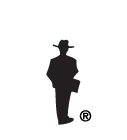A rash of articles appearing in the mass media during the past few weeks spotlights the latest epidemic of creative substance abuse…
Children and teens have once again discovered an unintended use for a common household product, following the likes of White-OutTM, ReadiWhipTM, Preparation HTM and Mucinex-DTM, leading to global warnings to educate parents of the risks associated with – if you can believe it – drinking hand sanitizers.
Most waterless sanitizers contain around 65 percent alcohol. Compared to the alcohol content of most beers (three to 10 percent) and wines (16 to 22 percent), these little, seemingly harmless bottles of clear, jell-like cleaners found in most homes, schools, grocery stores, restaurants, medical offices, and public meeting venues, boast an alcohol level three- to four-times greater than most commercially available consumable alcoholic beverages.
Easy access to PurellTM, with its high alcohol content, and readily available on-line instructions on how to separate the alcohol from the jell solution, create the massive awareness and accompanying lure of these products.
Today, most parents know of the risks associated with the potential for abuse of cough medicines, mouthwashes, and almost any other product containing any type of alcohol, should a teen attempt to use common products to get high or drunk.
Experimentation with new products proves a leading motivator to identifying new methods of abuse, and emergency room staffs frequently first encounter these newly identified risks. Such proves the case with Children’s Hospital of Los Angeles in the issue associated with Purell TM.
Unfortunately, most of the commonly abused products exist as mainstay items found in nearly every household, and returning to life without these products could prove difficult. But not always…
A similar product-abuse issue occurred involving the canned gas products used to clean computer keyboards. Children inhaled the bottled gas to get high, and it completely filled their lungs, thus displacing their lungs’ capacity to exchange oxygen.
The manufacturers responded by issuing cautionary warnings recommending parents to remove canned-gas products from their households. In many cases, children died by suffocating as the gas, heavier than oxygen, could not be exhaled from the child’s lungs. In our home, we locked up our canister, and we never bought another once we emptied it.
On-line search revealing the illicit “consumption” of hand sanitizers did not begin producing results specific only to 2012. I found articles dating back as early as 2007 highlighting the risks associated with abusing Purell TM and I warned parents to store these products safely.
Here’s a link to a recent article I found on the “Purell Syndrome”:
http://newyork.cbslocal.com/2012/04/24/dangerous-trend-teens-drinking-hand-sanitizer-to-get-drunk/
Unfortunately, you can easily find many more on Google. In a second Google search, using search the search term “distilling Purell” I found it incredibly easy to gain access to information on how to separate the alcohol from Purell TM, as follows:
http://uk.answers.yahoo.com/question/index?qid=20120428122750AABETnK
As always, “Forewarned is forearmed.”
